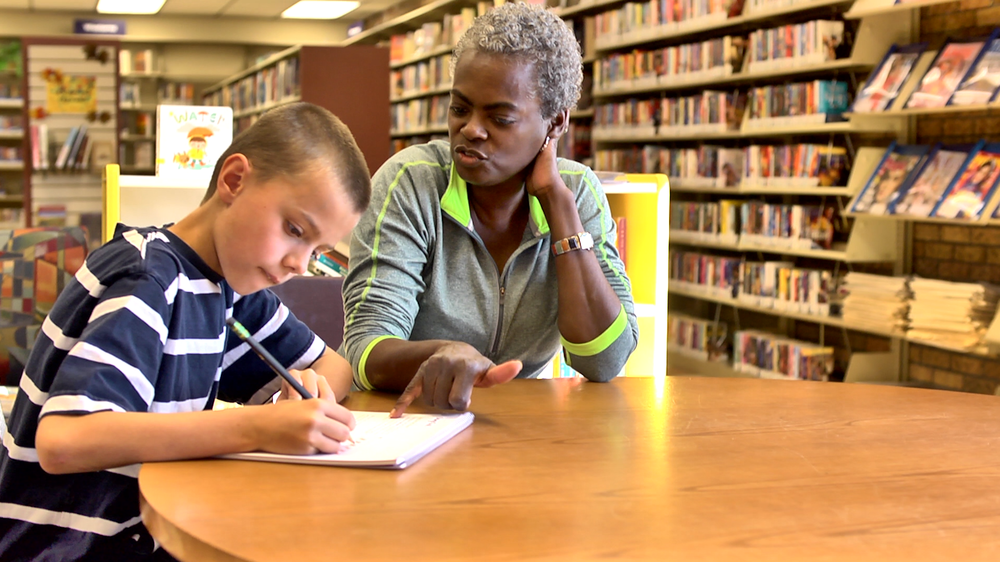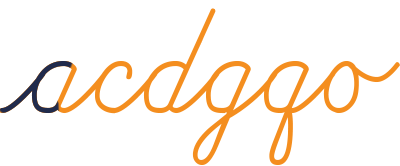Tulsans launch new curriculum for cursive handwriting
Happy National Handwriting Day! January 23rd was so designated because it's the birthday of John Hancock, president of the Second Continental Congress, whose bold signature graces our Declaration of Independence and became an eponym for a signature.
Cursive handwriting is a rarity anymore. I learned it in 4th grade, when it was still commonplace. As I remember it, it was a year-long process, and certain letters were just weird. Within a few years, I had given up on cursive and wrote in a somewhat slanted manuscript that wasn't joined up. By the time my kids learned it in school, we were told that many other schools had dropped cursive in favor of spending classroom time on other subjects. Many of today's teachers never learned cursive, much less learned how to teach it.
But now a Tulsa educator has come up with a way for students to reap the benefits of learning cursive with a much smaller investment of time.
Some time ago, an adult literacy student asked his teacher, Linda Shrewsbury (pictured above), to teach him cursive so he could learn to sign his name. She realized that the traditional letter-by-letter elementary school approach would be frustrating for an adult student, so she looked for a more streamlined approach. Writing the lower-case cursive alphabet out on a large sheet, she noticed four common patterns -- ovals, loops, swings, and mounds. Master the four patterns and you could quickly learn to combine them to form the entire alphabet.
When I explained the patterns to Josh, his response was intuitive and fast. He caught on to forming the entire lowercase alphabet in 45 minutes and became so enthusiastic about his success that learning his uppercase initials was easy. After just one session, Josh signed his name.After teaching more students from many different background all with similar results, I realized I was onto something--a greatly simplified way to help students master cursive handwriting. CursiveLogic's process teaches the entire lowercase alphabet in four lessons, greatly shortening the time required to master cursive handwriting.
Shrewsbury, who homeschooled her children and has taught in various settings from 1st grade to college, teamed up with her daughter Prisca LeCroy (who homeschools her children in Dallas) to turn this approach into a full-fledged curriculum, called CursiveLogic.
![]() A small number of prototype copies of the student workbook have been printed, but Cursive Logic has launched a $25,000 Kickstarter project to fund a full commercial print run of student workbooks and teacher manuals and, if enough funds are raised, to develop instructional videos. The project has been honored as a "Kickstarter Staff Pick."
A small number of prototype copies of the student workbook have been printed, but Cursive Logic has launched a $25,000 Kickstarter project to fund a full commercial print run of student workbooks and teacher manuals and, if enough funds are raised, to develop instructional videos. The project has been honored as a "Kickstarter Staff Pick."
Is learning cursive just good for signing checks and contracts? Dr. William Klemm, Senior Professor of Neuroscience at Texas A&M University, wrote in a Psychology Today blog entry, that cursive has benefits for brain development:
Yet scientists are discovering that learning cursive is an important tool for cognitive development, particularly in training the brain to learn "functional specialization"--that is, the capacity for optimal efficiency. In the case of learning cursive writing, the brain develops functional specialization that integrates both sensation, movement control, and thinking. Brain imaging studies reveal that multiple areas of brain become co-activated during the learning of cursive writing of pseudo-letters, as opposed to typing or just visual practice....The benefits to brain development are similar to what you get with learning to play a musical instrument. Not everybody can afford music lessons, but everybody has access to pencil and paper. Not everybody can afford a computer for their kids--but maybe such kids are not as deprived as we would think.
Prof. Klemm recently reviewed the CursiveLogic curriculum and was delighted:
Learning cursive provides crucial benefit to children at an age when they need it most: a sense of involvement and ownership, hand-eye coordination, patience, and self-control.Now comes a short manual, "Cursive Logic" by Linda Shrewsbury that shows teachers and parents how to teach cursive the way it was done when I was a kid. I recognize many of the key elements that I learned from my 7th grade penmanship teacher: the proper way to hold a pencil, the role of forearm movement, and the need for deliberate practice on ruled paper. But this manual has an important innovation: a logic that groups the alphabet into four shape categories that share certain common movements.
I hope this book can keep cursive in the school curriculum. Educators no longer have the excuse that cursive is too hard to learn and that they can't find teachers who can teach it. Write on!
Perhaps you'd like to teach yourself or a loved one cursive using the CursiveLogic method. The only way to get a copy of the workbook is to help fund its printing through Kickstarter. For donations starting at $25, the reward includes a copy of the workbook, with more copies at higher donation levels. From $500 and up, you get a piece of a page in the first 10,000 copies printed for your own "tribute to the cursive tradition." As with all Kickstarter projects, pledges are only collected if the full amount is pledged. CursiveLogic is seeking $25,000 in pledges by February 19; they're already over a quarter of the way toward their goal.
0 TrackBacks
Listed below are links to blogs that reference this entry: Tulsans launch new curriculum for cursive handwriting.
TrackBack URL for this entry: https://www.batesline.com/cgi-bin/mt/mt-tb.cgi/7418

